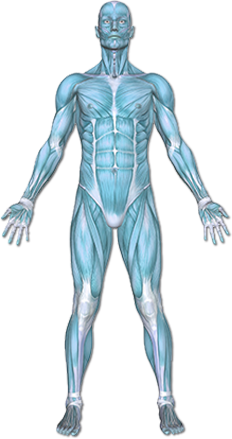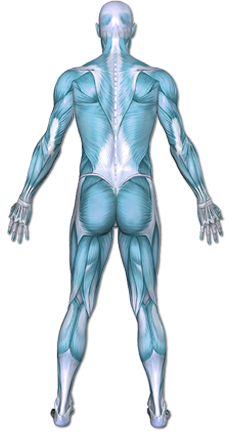Carpal Tunnel Syndrome
Carpal tunnel syndrome is a nerve disorder of the hand. It is caused by compression of the median nerve. The median nerve gets squeezed inside a narrow passage in the wrist called the carpal tunnel. This nerve provides feeling to the thumb, index and middle fingers, and half the ring finger.


Copyright © Nucleus Medical Media, Inc.
This content was created using EBSCO’s Health Library
Carpal tunnel syndrome is created by pressure on the median nerve. This pressure is caused by the carpal tunnel becoming narrower. The narrowing can be caused by many factors, including:
- Swelling of tissue in the carpal tunnel due to injury or fluid changes in your body
- Hereditary narrow carpal tunnel
- Tumors (rare)
This content was created using EBSCO’s Health Library
A risk factor is something that increases your chance of getting a disease or condition. Risk factors for carpal tunnel syndrome include:
- Sex: female
- Advancing age
- Obesity
- Excessive alcohol consumption
- Smoking
- Activities with repetitive hand motions:
- Certain sports
- Sewing
- Playing musical instruments
- Typing
- Assembly tasks
- Water retention from:
- Heart failure
- Kidney problems
- Wrist injury:
- Burns
- Broken bones
- Compression or crush injuries
- Arthritis
- Diabetes
- Raynaud’s disease and phenomenon, which impairs blood flow in the hands
- Hormone-related conditions:
- Pregnancy
- Breastfeeding
- Menopause
- Hypothyroidism
- Cushing’s disease
- Excess growth hormone
- Medicines:
- Birth control pills
- Cortisone pills or shots
- Some high blood pressure medicines
This content was created using EBSCO’s Health Library
Carpal tunnel syndrome causes symptoms in one or both hands or wrists. Symptoms may include:
- Tingling, burning, or numbness, especially in your thumb and index or middle fingers
- Pain or numbness that worsens with:
- Wrist, hand, or finger movement
- Sleep (symptoms may wake you)
- Hand stiffness or cramping that gets better after:
- Shaking your hand
- Waking up in the morning
- Weakness or clumsiness of your hand:
- Loss of grip strength
- Difficulty making a fist
- Frequently dropping things
- Pain that moves up your arm
This content was created using EBSCO’s Health Library
The doctor will ask about your symptoms and medical history. A physical exam of your arms, wrists, and hands will be done. The exam will include tests of strength, sensation, and signs of nerve irritation or damage. Other tests may include:
- Electrodiagnostic exam —Measures and records the speed of electrical conduction in your median nerve (to see if the nerve impulse in the hand is delayed)
- MRI scan —A test that uses magnetic waves to make pictures of structures inside your body, in this case the neck (cervical spine)
- X-ray —A test that uses radiation to take a picture of structures inside your body, especially bones
- Ultrasound—A test that uses sound waves to measure the width of your median nerve (may be used as a screening test or to guide injections)
This content was created using EBSCO’s Health Library
Therapy in a non-surgical situation will focus on reducing functional strain on the wrists. The therapist may provide an ergonomic evaluation of your workstation in order to reduce positional and repetitive motion strain. The therapist may recommend use of an over-the-counter or custom fabricated splint that holds the wrist in a slightly extended position to reduce the strain on the median nerve. The therapist will likely demonstrate median nerve glides and tendon glides to perform daily once the internal inflammation has decreased. Therapy intervention after surgery focuses on reducing inflammation at the wrist so that the tissues can heal. Once the carpal tunnel ligament is released during surgery, it has to be allowed to scar across the top of the tunnel but not to scar onto the tendons and nerve. The therapist will recommend light gliding techniques to ensure that the structures glide beneath the scar tissue and do not become captured in it. The therapist will provide a wrist extension splint (cock-up splint) to correctly position the wrist for healing. During this time, the wrist must heal and gripping and pinching may be avoided for 4-6 weeks. If the hand and wrist are overused during this time the surgical benefit may be compromised. Active motion of the digits is recommended and light motion at the wrist. Strengthening activities in therapy and at home will usually begin around 6 weeks after surgery.
This content was created using EBSCO’s Health Library
You may reduce your chances of getting carpal tunnel syndrome by taking these steps:
- Minimize repetitive hand movements when possible.
- Alternate between activities or tasks to reduce the strain on your body.
- When using your wrists, keep them straight. Let your arms and shoulders share the stress.
- Use your whole hand or both hands to pick up an item.
- Avoid holding an object the same way for a long time.
- If you work in an office, adjust your desk, chair, and keyboard so you are in the best possible position:
- Back straight
- Feet flat on the floor or resting on a footrest
- Knees level with or slightly lower than your hips
- Shoulders in a neutral position, not forward or back
- Elbows bent at a 90-degree angle
- Forearms parallel to the floor and wrists straight
- Take breaks at least every hour to:
- Rest or shake your hands
- Massage your palms and backs of your hands
- Get regular aerobic exercise such as walking or swimming.
- Cut down on caffeine and smoking. These activities may reduce blood flow to your hands.
This content was created using EBSCO’s Health Library
This content was created using EBSCO’s Health Library
- Carpal tunnel syndrome. EBSCO DynaMed website. Available at: http://dynamed.ebscohost.com/ . Updated October 8, 2012. Accessed October 23 ,2012.
- Carpal tunnel syndrome. The Female Patient . 1997;21-30.
- Carpal tunnel syndrome: how you can help your patient overcome the symptoms. Consultant . 1994.
- Cartwright MS, Hobson-Webb L, et al. Evidence-based guideline: neuromuscular ultrasound for the diagnosis of carpal tunnel syndrome. Muscle Nerve . 2012 Aug;46(2):287-93.
- DeLisa J, Gans BM. Physical Medicine & Rehabilitation: Principles and Practice . 4th ed. Philadelphia, PA; Lippincott Williams & WilkiFowler JR, Gaughan JP, Ilyas AM. The sensitivity and specificity of ultrasound for the diagnosis of carpal tunnel syndrome: a meta-analysis. Clin Orthop Relat Res . 2011 Apr;469(4):1089-94.
- ns; 2005: chap 36.
- Fowler JR, Gaughan JP, et al. The sensitivity and specificity of ultrasound for the diagnosis of carpal tunnel syndrome: a meta-analysis. Clin Orthop Relat Res . 2011 Apr;469(4):1089-94.
- Hunderfund AN, Boon AJ, et al. Sonography in carpal tunnel syndrome. Muscle Nerve . 2011 Oct;44(4):485-491.
- Katz RT. Carpal tunnel syndrome: a practical review. Am Fam Physician . 1994;49:1371-1379, 1385-1386.
- Ly-Pen D, Andréu JL, et al. Comparison of surgical decompression and local steroid injection in the treatment of carpal tunnel syndrome: 2-year clinical results from a randomized trial. Rheumatology (Oxford) . 2012 Aug;51(8):1447-54.
- O’Connor D, Page MJ, et al. Ergonomic positioning or equipment for treating carpal tunnel syndrome. Cochrane Database Syst Rev . 2012 Jan 18;1.
- Page MJ, O’Connor D, et al. Exercise and mobilisation interventions for carpal tunnel syndrome.Cochrane Database Syst Rev . 2012 Jun 13;6.
- Rayan GM. Understanding and managing carpal tunnel syndrome. Journal of Musculoskeletal Medicine . 1999;654.
- Shores JT, Lee WP. An evidence-based approach to carpal tunnel syndrome. Plast Reconstr Surg . 2010 Dec;126(6):2196-2204.
- Steyers CM, Schelkun PH. Practical management of carpal tunnel syndrome. Phys Sportsmed . 1995:83.
- Whitley JM, McDonnell DE. Carpal tunnel syndrome. Postgraduate Medicine . 1995;97:89-92,95-96.
This content was created using EBSCO’s Health Library


